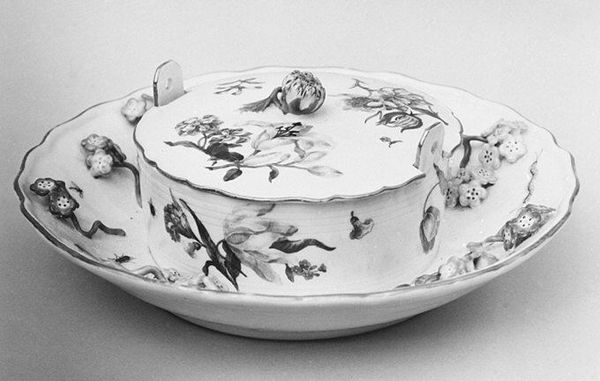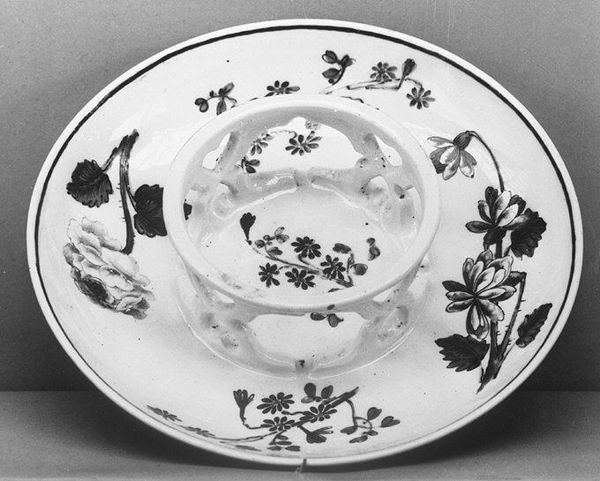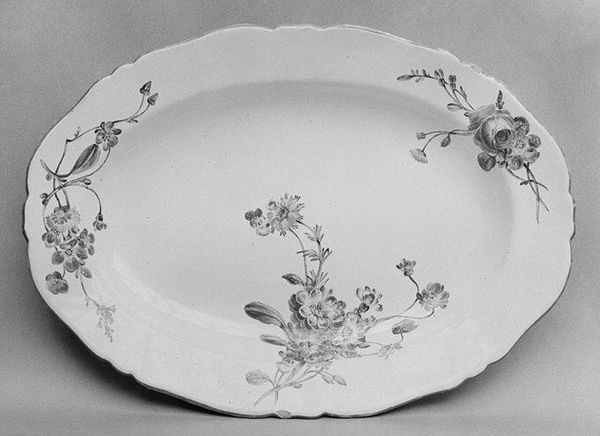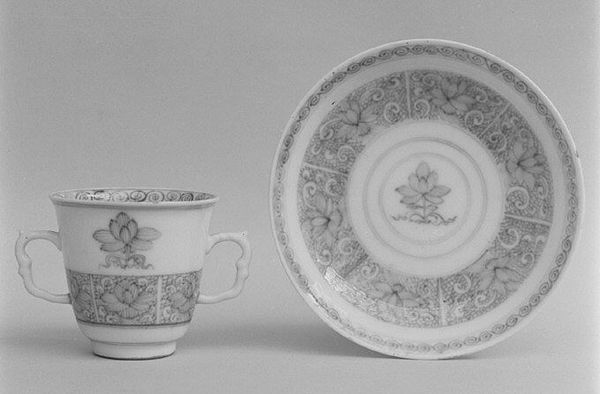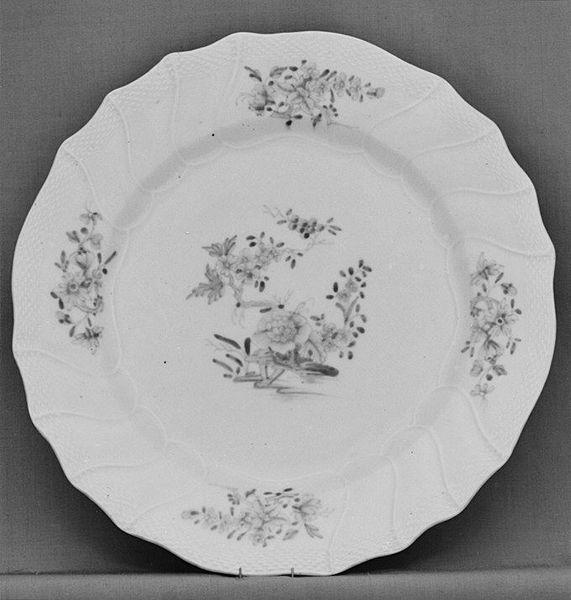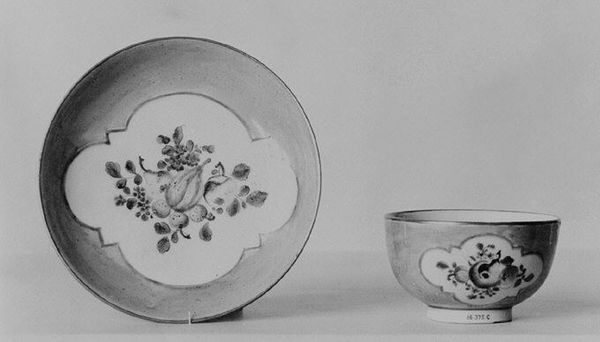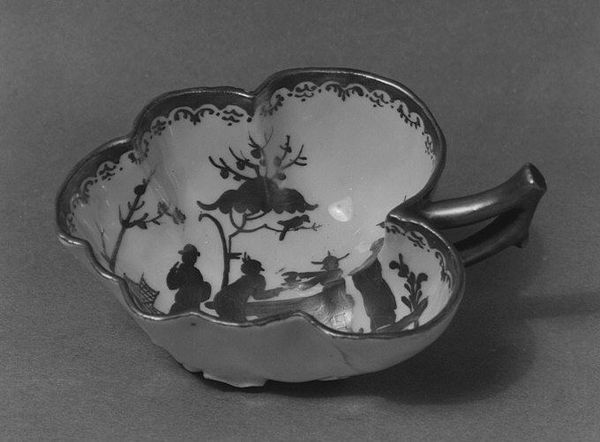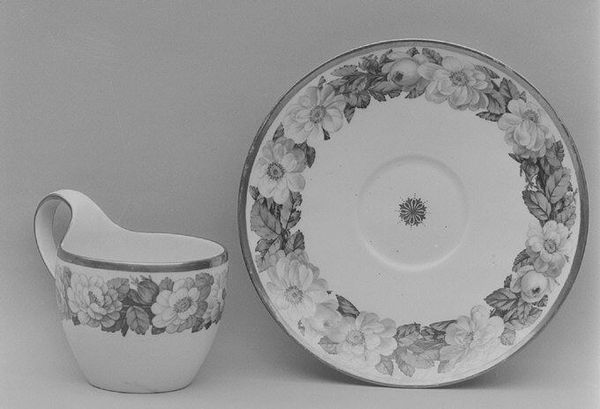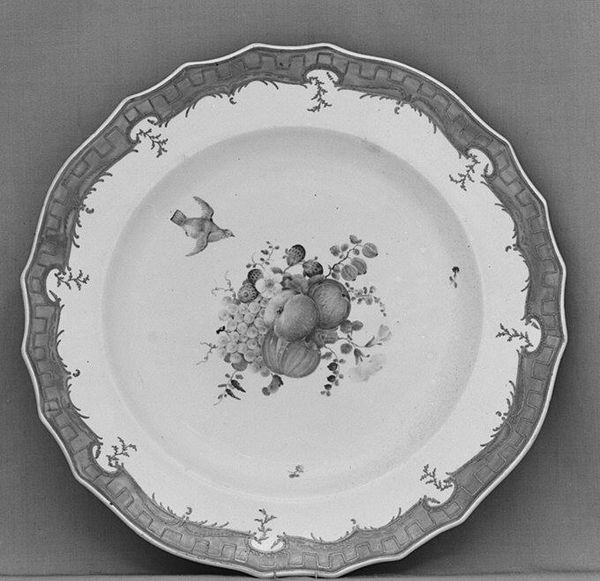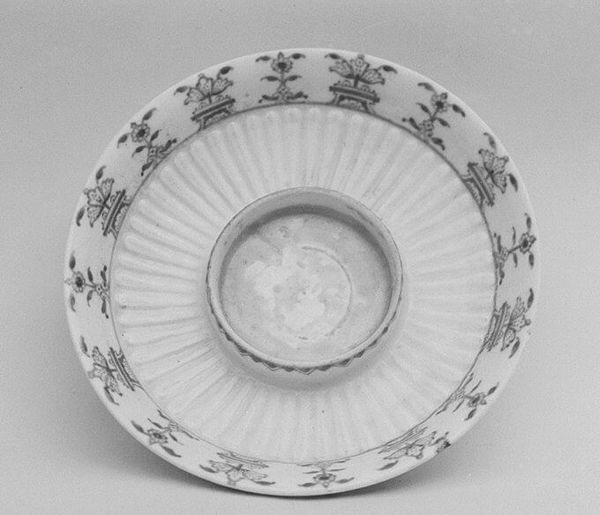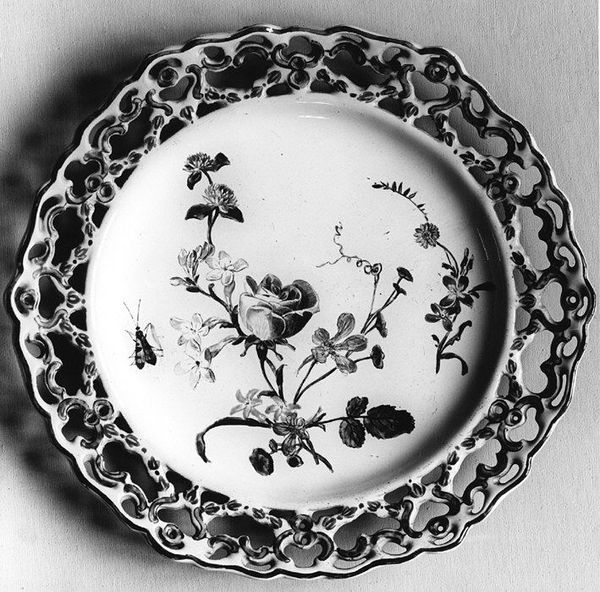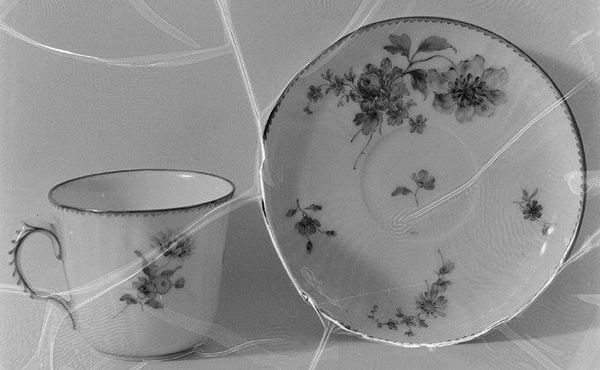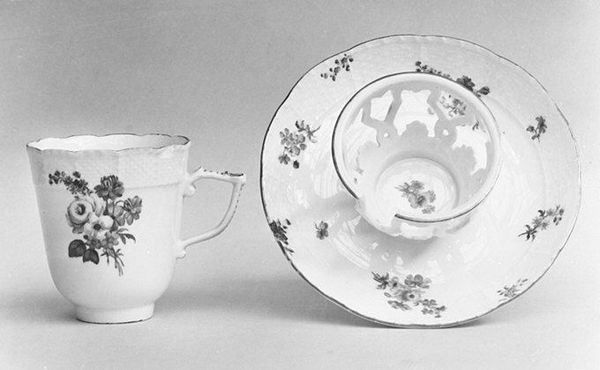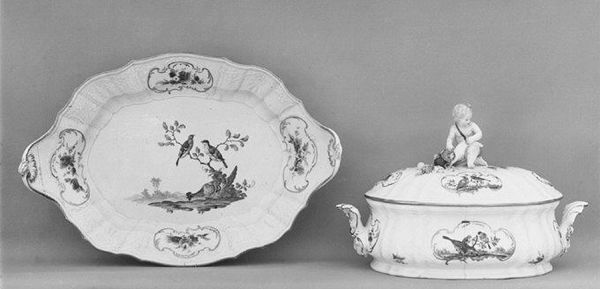
ceramic, porcelain, sculpture
#
ceramic
#
porcelain
#
sculpture
#
decorative-art
#
rococo
Dimensions: Overall: 1 1/2 × 5 1/8 in. (3.8 × 13 cm)
Copyright: Public Domain
Editor: Here we have a "Saucer," made around 1725 to 1735. It's a ceramic and porcelain sculpture from Vienna. I find the delicate floral paintings really captivating; they have an ephemeral feel to them. How would you describe its most important features? Curator: Indeed, the material properties are essential. The very refinement of the porcelain substrate lends itself to the Rococo style through its delicate, almost weightless quality. Consider the central form and its negative spaces against the broader plane of the dish: the piercing creates a rhythmic play of light and shadow. Editor: So the relationship between the material and the style is key here? It's almost as though the porcelain is dictating the lightness of the design? Curator: Precisely. Note how the subtle curvature of the saucer's edge is echoed in the undulating floral motifs, a kind of visual rhyming that ties the composition together. Furthermore, how does the outer band of geometric ornamentation affect our reading of the painted inner field? Editor: I hadn't thought about it like that, but now I see how the rigid geometry of the border highlights the free-flowing style of the flowers. It seems to give it some sort of formal restraint. Curator: A tension is established. Through this tension, do we see that this saucer achieves balance? Does its overall form achieve balance through line, shape and ornamentation? Editor: I think so. Before, I saw just a pretty little saucer, but now I see a complex conversation between material, form, and decoration. Curator: Yes. The interplay of these formal elements is key to understanding the piece’s success within the broader context of the decorative arts.
Comments
No comments
Be the first to comment and join the conversation on the ultimate creative platform.
